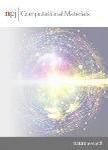Decoding defect statistics from diffractograms via machine learning
作者机构:Center for Integrated NanotechnologiesSandia National LaboratoriesAlbuquerqueNMUSA.2Georgia Institute of TechnologyAtlantaGAUSA
出 版 物:《npj Computational Materials》 (计算材料学(英文))
年 卷 期:2021年第7卷第1期
页 面:601-609页
核心收录:
学科分类:12[管理学] 1201[管理学-管理科学与工程(可授管理学、工学学位)] 081104[工学-模式识别与智能系统] 08[工学] 081203[工学-计算机应用技术] 0805[工学-材料科学与工程(可授工学、理学学位)] 0835[工学-软件工程] 0701[理学-数学] 0811[工学-控制科学与工程] 0812[工学-计算机科学与技术(可授工学、理学学位)] 0801[工学-力学(可授工学、理学学位)] 0702[理学-物理学]
基 金:This material is based upon work supported by the U.S.Department of Energy,Office of Science,Office of Basic Energy Sciences,Data,Artificial Intelligence and Machine Learning at DOE Scientific User Facilities program under Award Number 34532.A.S.9 S.R.K.acknowledge funding from ONR award N00014-18-1-2879
摘 要:Diffraction techniques can powerfully and nondestructively probe materials while maintaining high resolution in both space and ***,these characterizations have been limited and sometimes even erroneous due to the difficulty of decoding the desired material information from features of the ***,these features are identified non-comprehensively via human intuition,so the resulting models can only predict a subset of the available structural *** the present work we show(i)how to compute machine-identified features that fully summarize a diffractogram and(ii)how to employ machine learning to reliably connect these features to an expanded set of structural *** exemplify this framework,we assessed virtual electron diffractograms generated from atomistic simulations of irradiated *** based on machine-identified features rather than human-identified features,our machine-learning model not only predicted one-point statistics(***)but also a two-point statistic(*** distribution)of the defect ***,this work demonstrates that machine-learning models that input machine-identified features significantly advance the state of the art for accurately and robustly decoding diffractograms.



